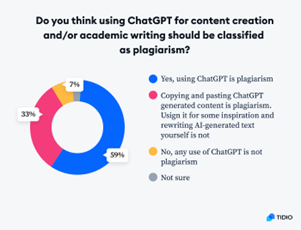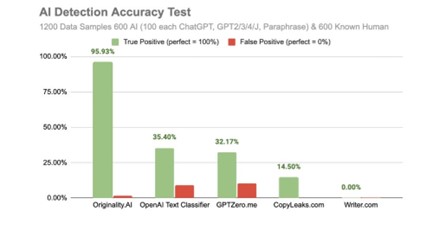Contents
In today’s digital world, it’s a breeze to find and share information. But this ease comes with a challenge: plagiarism. Whether in school, at work or in other creative fields, the line between original work and copied content can sometimes get blurry. Detecting plagiarism isn’t just about calling out copycats—it’s about protecting our ideas, standing by fair play and encouraging real innovation. Recent research in plagiarism detection is moving beyond simple text matching, bringing smart technologies like artificial intelligence and Blockchain to the mix. In this article, we’ll explore the latest in plagiarism detection, shedding light on new strategies and tech tools that help protect creative and intellectual work and keep plagiarism at bay.
Plagiarism Detection In The Present Age
The path of uncovering plagiarism has seen quite a transformation. In the early days, it was all about matching text or comparing data with a database, but these straightforward methods hit a wall when it came to spotting paraphrasing or rewording. Fast forward to today and you’ll find researchers digging into smarter ways to catch plagiarism. They’re exploring the realms of machine learning, delving into contextual analysis and examining citations more closely. These exciting advancements are paving the way for a future where spotting plagiarism could become much more precise and insightful.

With the advent of various generative AI tools, creating content has become a simpler task. However, this ease brings forth a pressing question: Does using tools like Chat GPT for content creation or academic writing count as plagiarism? A recent survey by TIDIO sheds some light on public perception, revealing that 59% of respondents view it as plagiarism. This perspective highlights the evolving challenges in plagiarism detection, underscoring the need for continued research and advanced solutions in this domain.
As we approach 2024, we believe certain factors will drive the advancements in the arena of Plagiarism Detection that will lead to pivotal shifts toward ensuring integrity in academic and professional endeavors. Let’s peek into what’s going to shape the world of Plagiarism Detection going ahead.
Factors Influencing The Advancements In Plagiarism Detection
Ethical Considerations And Fair Use
One of the biggest drivers of evolution in Plagiarism Detection technology has to be its ability to comprehend and identify fair use. Modern-day plagiarism detection technologies need to be savvy enough to differentiate between exact copies and proper citations or common phrase usage. They need to define the ethical boundaries of what qualifies as plagiarism and what doesn’t to make plagiarism detection fair and reliable.
Essentially, these tools have to do a delicate dance between flagging the bad stuff and giving a nod to the proper use of sources. Plagiarism checkers need to tech-ability to tell when someone’s quoting directly or just rephrasing. They also ought to recognize that using references in academic writing is all above board.
Privacy Concerns
The next big worry and driving force in technological advancement in the field of Plagiarism Detection is privacy, especially as more and more folks start using plagiarism checkers. Imagine uploading your work to these platforms and then not knowing what happens after logging out. It’s kind of unsettling to think that some tools might keep a copy, which begs the question: is our data safe and could it be misused? A peek into a study by Essayscam reveals that 25% of online plagiarism scanners hold onto the checked content, 28% say they don’t, while for the remaining 44%, it’s a mystery.
In the next wave of technological evolution in the field, these privacy concerns need to be addressed and dealt with at large. Tools need to evolve to become more transparent, reliable and secure for users to depend on them and trust them with their work.
AI Integration
AI, the chatter of the town, right? Invariably, it’s causing a stir in the plagiarism checker arena as well. These AI-powered buddies are top-notch in precision, catching the little details that were easy to miss before. They can sift through a heap of sources all at once, scouring vast databases to find any matches. The fun part? They delve into the context, too, looking at sentence structures and meanings, adding another layer to their detection prowess. However, it’s a playful cat-and-mouse game between AI tools detecting AI-generated content and those crafting plagiarism-free content. A study by Originality.ai dived in with 1200 pieces of content, half AI-crafted and half human-made, to gauge how accurate these tools are. It’s an exhilarating glimpse into the AI and content tango.
We can bet that AI is going to force plagiarism detection technologies to evolve for good. So much so, that they’ll be able to tackle AI-generated plagiarism-free content while protecting creative work.

Blockchain Implementation
Now, if AI is stirring the pot, Blockchain is also having its moment in the sun. It’s this rock-solid tech that locks in data, making it tamper-proof. Every document gets a unique time stamp and is stored in different corners, making it a tough nut to crack for anyone with mischief in mind.
In the times to come, we’re sure plagiarism checkers will team up with Blockchain, making their results even more trustworthy. It’s like giving researchers and teachers a stronger shield to vouch for the originality of their work. This combo could reshape how we nab plagiarism, paving the way for secure and reliable academic content. Pretty neat, huh?
Wrapping Up
In today’s click-and-share digital world, creating and sharing stuff has become a piece of cake. But here comes the tricky part: making sure what’s shared is original and not copied from somewhere else. As we’ve seen, the world of spotting plagiarism is changing fast, with cool tech like artificial intelligence and Blockchain jumping into the fray. These new helpers are not just about catching copycats but also about making sure our privacy is respected and fair use is understood, which is super important for everyone, from students to professionals. This blend of smart plagiarism detection, ethical thinking and new technologies is painting a hopeful picture. It’s leading us towards a future where checking the originality of content could be a no-brainer, making it easier for creativity and fresh ideas to shine in a more connected world than ever. So, as the battle against plagiarism gets a techy upgrade, it’s a thrilling time for everyone who loves to create and share ideas the right way!

